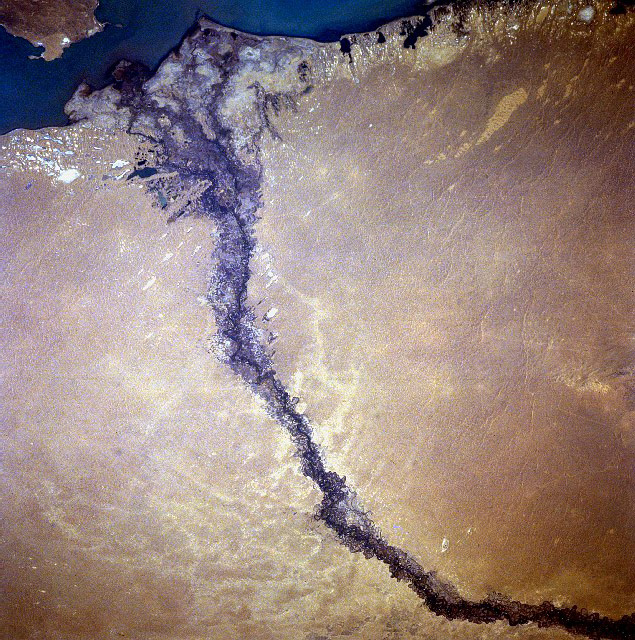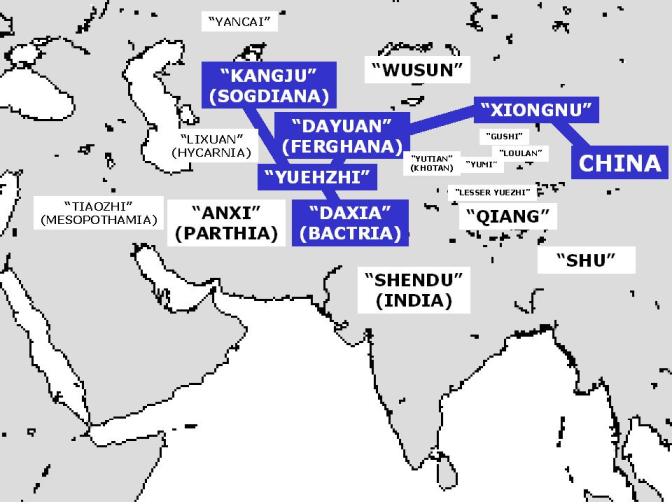|
Qanqli
The Kangly (康曷利; pinyin: Kānghélì; Middle Chinese ( ZS): /kʰɑŋ-ɦɑt̚-liɪH/ or 康里 pinyin: ''Kānglĭ'' < MC-ZS: /kʰɑŋ-lɨX/; : قنكلى ''Kaγnï'' or قنكلى ''Kaŋlï'', also spelled Qanglı, Kanly, Kangly, Qangli, Kangli or Kankali) were a of who were active since the up to the Mongol Empire and |
Tang Huiyao
The ''Tang Huiyao'' () is an institutional history of Tang dynasty compiled by Wang Pu and presented it to Emperor Taizu of Song in 961. The book contains 100 volumes and 514 sections, it has an abundant content for the period before 846, and scarce material unobtainable from the ''Tongdian'', ''Old Book of Tang'', and ''New Book of Tang''. It combines the earlier ''Huiyao'' compiled by Su Mian, which covers the history of Tang to 779, and the ''Xu Huiyao'' by Yang Shaofu and others, which extended the coverage to 846. The compilation was finished by the early Song dynasty, with the addition of small amount of material after the reign of Emperor Xuānzong of Tang included by Wang Pu. References * Zhang, Zexian"Tang Huiyao" ("Institutional History of Tang") ''Encyclopedia of China The ''Encyclopedia of China'' () is the first large-entry modern encyclopedia in the Chinese language. The compilation began in 1978. Published by the Encyclopedia of China Publishing House, the en ... [...More Info...] [...Related Items...] OR: [Wikipedia] [Google] [Baidu] |
Kipchaks
The Kipchaks or Qipchaks, also known as Kipchak Turks or Polovtsians, were a Turkic people, Turkic nomadic people and confederation that existed in the Middle Ages, inhabiting parts of the Eurasian Steppe. First mentioned in the 8th century as part of the Second Turkic Khaganate, they most likely inhabited the Altai Mountains, Altai region from where they expanded over the following centuries, first as part of the Kimek Khanate and later as part of a confederation with the Cumans. There were groups of Kipchaks in the Pontic–Caspian steppe, China, Syr Darya and Siberia. The Cuman–Kipchak confederation was conquered by the Mongol Empire, Mongols in the early 13th century. Terminology The Kipchaks interpreted their name as meaning "hollow tree" (cf. Middle Turkic: ''kuv ağaç''); according to them, inside a hollow tree, their original human ancestress gave birth to her son. Gyula Németh (linguist), Németh points to the Siberian ''qıpčaq'' "angry, quick-tempered" attested on ... [...More Info...] [...Related Items...] OR: [Wikipedia] [Google] [Baidu] |
Lake Balkhash
Lake Balkhash ( kk, Балқаш көлі, ''Balqaş kóli'', ; russian: озеро Балхаш, ozero Balkhash) is a lake in southeastern Kazakhstan, one of the largest lakes in Asia and the 15th largest in the world. It is located in the eastern part of Central Asia and sits in the Balkhash-Alakol Basin, an endorheic (closed) basin. The basin drains seven rivers, the primary of which is the Ili, bringing most of the riparian inflow; others, such as the Karatal, bring surface and subsurface flow. The Ili is fed by precipitation, largely vernal snowmelt, from the mountains of China's Xinjiang region. The lake currently covers about . However, like the Aral Sea, it is shrinking due to diversion and extraction of water from its feeders. The lake has a narrow, quite central, strait. The lake's western part is fresh water. The lake's eastern half is saline. The east is on average 1.7 times deeper than the west. The largest shore city is named Balkhash and has about 66,000 inhab ... [...More Info...] [...Related Items...] OR: [Wikipedia] [Google] [Baidu] |
Khwarezmid Empire
The Khwarazmian or Khwarezmian Empire) or the Khwarazmshahs ( fa, خوارزمشاهیان, Khwārazmshāhiyān) () was a Turko-Persian Sunni Muslim empire that ruled large parts of present-day Central Asia, Afghanistan, and Iran in the approximate period of 1077 to 1231, first as vassals of the Seljuk Empire and the Qara Khitai (Western Liao dynasty), and later as independent rulers, up until the Mongol conquest in the 13th century. It is estimated that the empire spanned an area of 2.3 million square kilometers to 3.6 million square kilometers effectively making it one of the largest land empires in history. In the beginning of the 13th century, the empire was the greatest power in the Muslim world. The empire, which was modelled on the preceding Seljuk Empire, was defended by a huge cavalry army composed largely of Kipchak Turks. However, in 1219, the Mongols under their ruler Genghis Khan invaded the Khwarazmian Empire, successfully conquering the whole of it in just ... [...More Info...] [...Related Items...] OR: [Wikipedia] [Google] [Baidu] |
Cumania
The name Cumania originated as the Latin exonym for the Cuman–Kipchak confederation, which was a tribal confederation in the western part of the Eurasian Steppe, between the 10th and 13th centuries. The confederation was dominated by two Turkic nomadic tribes: the Cumans (also known as the Polovtsians or ''Folban'') and the Kipchaks. Cumania was known in Islamic sources as ''Desht-i Qipchaq'', which means "Steppe of the Kipchaks"; or "foreign land sheltering the Kipchaks", in Persian and ''al-Qumāniyīn'' in Arabic. Russian sources have referred to Cumania as the "Polovtsian Steppe" (''Polovetskaia Step''), or the "Polovtsian Plain" (''Pole Polovetskoe''). A different, more organized entity that came later known as the Golden Horde was also referred to as "Comania" by Armenian chronicler Hethum (Hayton) of Korykos. "Cumania" was also the source of names, or alternate names, for several smaller areas – some of them unconnected geographically to the area of the federation ... [...More Info...] [...Related Items...] OR: [Wikipedia] [Google] [Baidu] |
Pecheneg Khanate
The Pechenegs () or Patzinaks tr, Peçenek(ler), Middle Turkic: , ro, Pecenegi, russian: Печенег(и), uk, Печеніг(и), hu, Besenyő(k), gr, Πατζινάκοι, Πετσενέγοι, Πατζινακίται, ka, პაჭანიკი, bg, печенеги, pechenegi, bg, печенези, ; sh-Latn-Cyrl, Pečenezi, separator=/, Печенези, la, Pacinacae, Bisseni were a semi-nomadic Turkic ethnic people from Central Asia who spoke the Pecheneg language which belonged to the Oghuz branch of the Turkic language family. Ethnonym The Pechenegs were mentioned as ''Bjnak'', ''Bjanak'' or ''Bajanak'' in medieval Arabic and Persian texts, as ''Be-ča-nag'' in Classical Tibetan documents, and as ''Pačanak-i'' in works written in Georgian. Anna Komnene and other Byzantine authors referred to them as ''Patzinakoi'' or ''Patzinakitai''. In medieval Latin texts, the Pechenegs were referred to as ''Pizenaci'', ''Bisseni'' or ''Bessi''. East Slavic peo ... [...More Info...] [...Related Items...] OR: [Wikipedia] [Google] [Baidu] |
Kangju
Kangju (; Eastern Han Chinese: ''kʰɑŋ-kɨɑ'' < *''khâŋ-ka'' (c. 140 BCE)) was the Chinese name of a kingdom in during the first half of the CE. The name ''Kangju'' is now generally regarded as a variant or mutated form of the name . According to contemporaneous Chinese sources, Kangju was the second most powerful state in , after the . [...More Info...] [...Related Items...] OR: [Wikipedia] [Google] [Baidu] |
Western Turkic Khaganate
The Western Turkic Khaganate () or Onoq Khaganate ( otk, 𐰆𐰣:𐰸:𐰉𐰆𐰑𐰣, On oq budun, Ten arrow people) was a Turkic khaganate in Eurasia, formed as a result of the wars in the beginning of the 7th century (593–603 CE) after the split of the Turkic Khaganate (founded in the 6th century on the Mongolian Plateau by the Ashina clan) into a western and an eastern Khaganate. The whole confederation was called ''Onoq'', meaning "ten arrows". According to a Chinese source, the Western Turks were organized into ten divisions. The khaganate's capitals were Navekat (summer capital) and Suyab (principal capital), both situated in the Chui River valley of Kyrgyzstan, to the east of Bishkek. Tong Yabgu's summer capital was near Tashkent and his winter capital Suyab. The Western Turkic Khaganate was subjugated by the Tang dynasty in 657 and continued as its vassal until their collapse. History The first Turkic Khaganate was founded by Bumin in 552 on the Mongolia ... [...More Info...] [...Related Items...] OR: [Wikipedia] [Google] [Baidu] |
Eastern Turkic Khaganate
The Eastern Turkic Khaganate () was a Turkic khaganate formed as a result of the internecine wars in the beginning of the 7th century (AD 581–603) after the First Turkic Khaganate (founded in the 6th century in the Mongolian Plateau by the Ashina clan) had splintered into two polities – one in the east and the other in the west. Finally, the Eastern Turkic Khaganate was defeated and absorbed by the Tang dynasty, and Xueyantuo occupied the territory of the former Turkic Khaganate. History Outline In 552-555 the Göktürks replaced the Rouran Khaganate as the dominant power on the Mongolian Plateau, forming the First Turkic Khaganate (552-630). They quickly spread west to the Caspian Sea. Between 581 and 603 the Western Turkic Khaganate in Central Asia separated from the Eastern Khaganate in the Mongolian Plateau. In the early period the Central Plain regimes were weak and paid tribute to the Turks at times. The Tang dynasty eventually overthrew the Eastern Turks ... [...More Info...] [...Related Items...] OR: [Wikipedia] [Google] [Baidu] |
Sogdia
Sogdia ( Sogdian: ) or Sogdiana was an ancient Iranian civilization between the Amu Darya and the Syr Darya, and in present-day Uzbekistan, Turkmenistan, Tajikistan, Kazakhstan, and Kyrgyzstan. Sogdiana was also a province of the Achaemenid Empire, and listed on the Behistun Inscription of Darius the Great. Sogdiana was first conquered by Cyrus the Great, the founder of the Achaemenid Empire, and then was annexed by the Macedonian ruler Alexander the Great in 328 BC. It would continue to change hands under the Seleucid Empire, the Greco-Bactrian Kingdom, the Kushan Empire, the Sasanian Empire, the Hephthalite Empire, the Western Turkic Khaganate and the Muslim conquest of Transoxiana. The Sogdian city-states, although never politically united, were centered on the city of Samarkand. Sogdian, an Eastern Iranian language, is no longer spoken, but a descendant of one of its dialects, Yaghnobi, is still spoken by the Yaghnobis of Tajikistan. It was widely spoken in Central A ... [...More Info...] [...Related Items...] OR: [Wikipedia] [Google] [Baidu] |
Constantine VII
Constantine VII Porphyrogenitus (; 17 May 905 – 9 November 959) was the fourth Emperor of the Macedonian dynasty of the Byzantine Empire, reigning from 6 June 913 to 9 November 959. He was the son of Emperor Leo VI and his fourth wife, Zoe Karbonopsina, and the nephew of his predecessor Alexander. Most of his reign was dominated by co-regents: from 913 until 919 he was under the regency of his mother, while from 920 until 945 he shared the throne with Romanos Lekapenos, whose daughter Helena he married, and his sons. Constantine VII is best known for the '' Geoponika'' (τά γεοπονικά), an important agronomic treatise compiled during his reign, and three, perhaps four, books; '' De Administrando Imperio'' (bearing in Greek the heading Πρὸς τὸν ἴδιον υἱὸν Ῥωμανόν), '' De Ceremoniis'' (Περὶ τῆς Βασιλείου Τάξεως), '' De Thematibus'' (Περὶ θεμάτων Άνατολῆς καὶ Δύσεως), and '' Vita Bas ... [...More Info...] [...Related Items...] OR: [Wikipedia] [Google] [Baidu] |









